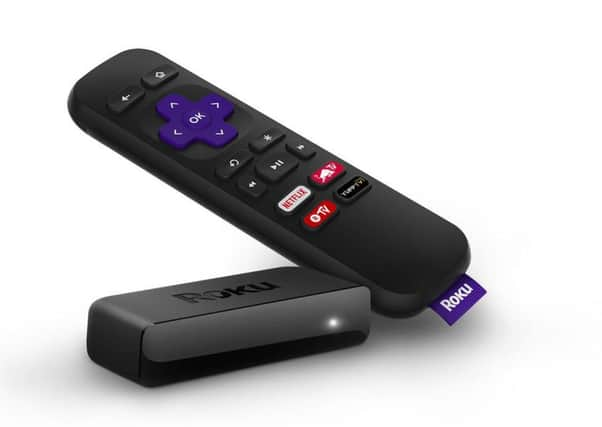We seem to have lost the picture: Will Channel 4 kill Freesat?


Britain has two free-to-air distributions systems in the digital age: Freeview and Freesat. If you live within a clear sight line of one of the main transmitters, Freeview is the obvious choice, because all the available channels are there in standard and high definition.
But if – as is the case in much of Yorkshire – you rely on one of the many relay transmitters which redirect the signal to places the topography would otherwise block, the picture is distinctly fuzzier. That’s because Freeview carries far fewer channels in those areas.
Advertisement
Hide AdAdvertisement
Hide AdFreesat, which you receive with a satellite dish instead of an aerial but which, unlike Sky, does not require a subscription, was created nine years ago when swathes of Britain, Yorkshire included, were still reliant on analogue transmissions. It brought free high definition services to those areas for the first time.
Even when Freeview became universal in 2012, Freesat remained the system of choice for those in relay areas. But the decision by Channel 4 a few weeks ago to withdraw from it both its high-def and catch-up services, changes all that.
It means that even with a top-of-the-range, £170 Freesat recorder with built-in catch-up, you can no longer watch the fourth channel, except in standard definition. That makes the service impossible to recommend.
C4 was able to do this because Its licence requires it to make only its basic channel available on every platform, and its relationship with Freesat, it says, had become too expensive to maintain.
Advertisement
Hide AdAdvertisement
Hide AdThe channel has form for this sort of thing – its catch-up service, All4, is also unavailable on computers running non-mainstream operating systems. And with no noticeable backlash from viewers having materialised, there is no indication it will modify its stance on Freesat. Indeed, it may encourage other broadcasters to follow.
All of which means that outside the main transmitter areas, there is now no option for receiving all the free-to air channels in high-def, unless you subscribe to Sky or Virgin – which, of course, would mean they were no longer free. This applies to Wharfedale, Scarborough and many other pockets of the West, North and East Ridings. In these areas, C4’s main channel is on Freeview in HD but its other channels are not, and neither is BBC Four. The exception is Sheffield, which is covered by a relay that carries the full range of channels.
It makes catch-up viewing, via a streaming box independent of either Freeview or Freesat, a more attractive proposition – though it also has the drawback that you can no longer fast-forward through the commercials.
Assuming you have a wireless broadband router in your house, the £30 Roku Express is currently the best value and best equipped streamer – with the BBC, ITV, C4 and C5 catch-up services in HD, plus Netflix, Amazon Prime Video, Spotify and Sky’s Now TV subscription offerings built-in. Some or all of these may duplicate the offerings already on your smart TV. Google’s £30 Chomecast and Amazon’s £40 Fire TV Stick are other options.
Advertisement
Hide AdAdvertisement
Hide AdThe shared experience of seeing television as it’s transmitted will be something we can enjoy for another generation at least, but in the geographically-challenged parts of Yorkshire especially, we may now have reached the point at which it is not the first recourse but a last resort.